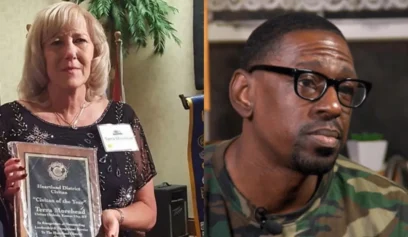
Three days after the strongest typhoon in recorded history hit the region, officials are estimating that as many as 10,000 have died in Typhoon Haiyan, which has been given the name Yolanda. The U.S. has sent military transport planes and a contingent of Marines to help, bringing emergency supplies of food and water and sanitation.
The typhoon slammed into eastern Leyte and Samar islands on Friday, destroying everything in its path.
There was “complete devastation… entire parts of the coastline just disappeared, and sizable trees just bent over and [were] thrown about like matchsticks,” according to Jane Cocking, the humanitarian director for Oxfam.
After making landfall in north Vietnam, near the Chinese border, the typhoon weakened to a tropical storm.
In Tacloban, 360 miles from Manilla, correspondents report the stench of rotting corpses, with bodies strewn across roadsides.
A total of more than 9 million people have been affected in the Philippines. The exposed easterly town of Guiuan, in the Samar province, with a population of 40,000, is said to be largely destroyed. Baco, a city of 35,000 in the Oriental Mindoro province, was 80 percent under water, according to the U.N.
“There’s an awful lot of casualties, a lot of people dead all over the place, a lot of destruction,” Richard Gordon, head of the Philippine Red Cross, told the BBC. “It’s absolute bedlam right now, but hopefully it will turn out better as more and more supplies get into the area.”


